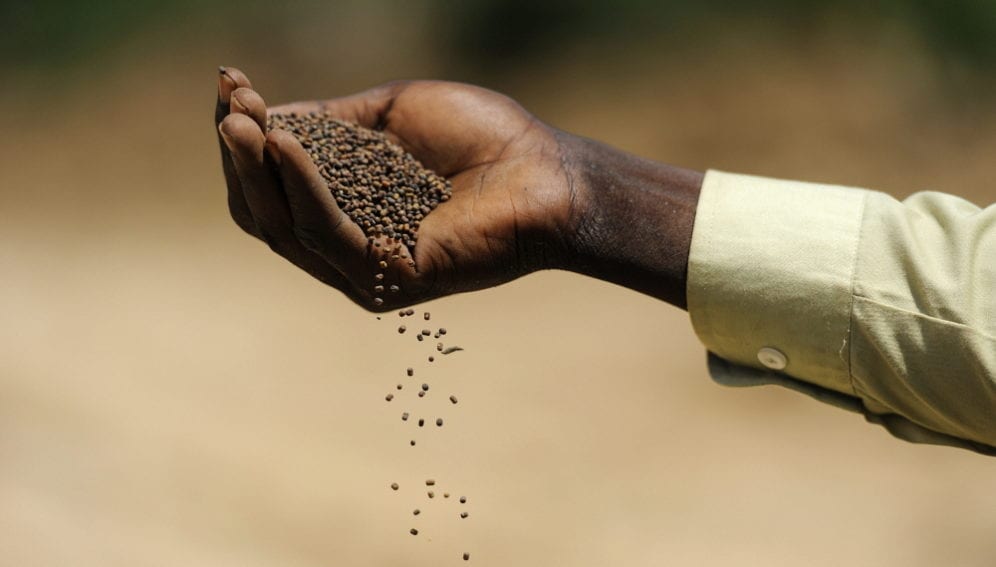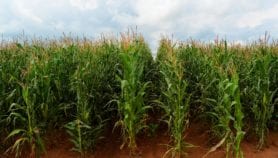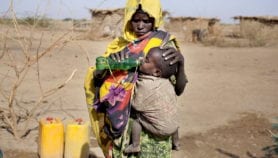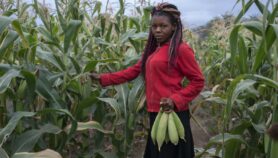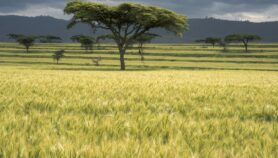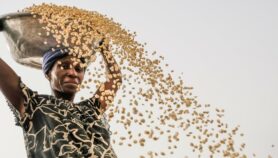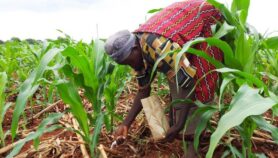By: Anita Makri
Send to a friend
The details you provide on this page will not be used to send unsolicited email, and will not be sold to a 3rd party. See privacy policy.
Evaluation of farming systems, new ideas and learning with practitioners should be part of a transformed agriculture.
Food security is difficult to pin down. It can be explained simply as access to enough food. But behind that simplicity lies an interconnected web of factors — from food prices to agricultural practices, nutrition, natural resources, technology, trade and social development.
Breaking down such complexity to its component parts is artificial, but is often necessary to gain understanding. It is in that spirit that the collection of articles this week focuses on just one, but fundamental, aspect of food security: sustainable agriculture. We examine how science and technology (S&T) can increase agricultural productivity within environmental and resource limits. (Our next Spotlight will explore other aspects of food security.)
Although agricultural productivity has changed remarkably over the past 50 years or so, partly helped by advances in S&T, the limits to this growth are now clear. Scarce land and water, poor soils, climate change impacts and more mouths to feed are among the challenges farmers face in the twenty-first century, particularly the smallholders who grow most of the food consumed in the developing world.
Time for transformation
An overview article by Zareen Pervez Bharucha, of the University of Essex in the United Kingdom, outlines resource challenges for agriculture — some of them the Green Revolution's environmental legacy — that illustrate a need to fundamentally transform farming.
Bharucha traces how S&T contributed to agricultural development, summarises recent advances (such as new crop varieties that benefit smallholders), and profiles agroecological systems that combine technological innovation with management strategies to suit local conditions in developing countries.
In the first of three opinion articles, Cuba-based agroecologist, researcher and farmer Fernando R. Funes-Monzote says family farmers must be central to any strategy for sustainable food production — and that agroecology is the most realistic approach. He argues for the building of bridges between the realities of family farming and debates on sustainable agriculture, saying that, despite its promise, agroecology has had little impact as yet.
Echoing the call for a paradigm shift, Norman Uphoff, professor of government and international agriculture at Cornell University, United States, calls for alternative approaches to farming that suit current and future realities. The usual, linear 'from lab to land' model of developing and diffusing innovations needs to change, says Uphoff. Scientists and practitioners should learn from new methods and ideas such as the System of Rice Intensification (SRI) — and they must get better at learning both with and from farmers.
“Family farmers must be central to any strategy for sustainable food production.”
Fernando R. Funes-Monzote, Latin American Scientific Society of Agroecology
There are several examples of farmer-led innovation and of fruitful collaboration between smallholders and researchers in the developing world, reports Joel Winston in a feature article. In some cases these have developed into farmer field schools: networks that share ideas and knowledge across agricultural communities.
These initiatives challenge the top-down model of technology transfer, tap into farmers' expertise and give them real control over the technologies they adopt.
What really works?
These writers reveal a palpable conviction about the potential of food production models that focus on agricultural ecosystems and smallholders. But how do farmers and scientists know what works?
The effectiveness of agroecological systems has been under debate, writes David J. Spielman, senior research fellow at the International Food Policy Research Institute in the United States. In the case of SRI, for example, Uphoff says it's time to accept the evidence of farmers' increased yields and the system's growing popularity, and put the controversy aside.
Spielman suggests economists can help evaluate such 'real-world' evidence, whatever the agricultural approach taken. But they'll need to work more closely with agronomists, he argues.
Perhaps one prerequisite to such collaboration is greater investment in gathering evidence — requiring a bigger and stronger monitoring and evaluation (M&E) component for any agricultural development project. A 2009 survey of agricultural experts suggested that M&E is weak, with little incentive for agencies and other organisations to devote resources to it. [1]
Another way of finding out what works — what some countries are doing right and how to replicate it — is to find success stories and communicate them, said Steve Wiggins, from the UK's Overseas Development Institute, speaking at The All Party Parliamentary Group on Agriculture and Food for Development in the United Kingdom last April.
Take the best of both
In a review of 20 agricultural success stories assessed by an international panel in 2009, applying S&T emerged as one of several determinants of success. [2] The case-studies included research and development for advanced crop breeding techniques as well as tools that work with farmers' traditional resource management practices.
This reminds us that the scientific approaches that 'worked' in the twentieth century are by no means irrelevant. It's no accident that the Bill & Melinda Gates Foundation is working on computational advances that aim to take years off the development process for improved crop genotypes.
But how centrally biotechnology will feature in future agricultural development remains an open question. The answer may differ depending on location, context or crops.
Taken as a whole, our Spotlight articles suggest that sustainable agricultural development cannot simply apply technology or innovation, whether transferred or home-grown. S&T can provide the tools that people — farmers, scientists, economists or other partners — develop, according to their own needs.
Knowledge sharing, cooperation and learning platforms are essential.
Progress should come from investing not just in scientific approaches, but also in human resources. That will ensure agricultural production systems are sustainable — and have people keeping them that way.
Anita Makri
Opinion & special features editor, SciDev.Net
This article is part of the Spotlight on Producing food sustainably.
This article was originally published on SciDev.Net's global edition
References
[1] Lindstrom J. What is the state of M&E in agriculture? Findings of the ALINe online consultation survey (Institute of Development Studies and Keystone Accountability, 2009)
[2] Spielman D. J. and Pandya-Lorch R. Highlights from Millions Fed: proven success in agricultural development (IFPRI, 2009)


